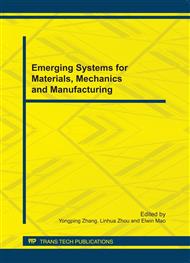p.232
p.237
p.244
p.248
p.253
p.261
p.266
p.271
p.276
Thermal Shock Cracks Initiation and Propagation of WCp / Steel Substrate Surface Composite at 500°C
Abstract:
In order to provide a theoretical basis for the study of thermal fatigue properties on surface composites, thermal shock cracks initiation and propagation of WCP reinforced high chromium steel substrate surface composites were studied by thermal shock test method at 500 °C. The results show that cracks initiation and propagation begin within a few thermal shock cycles, and after 15 thermal shock cycles, the composites remain intact, indicating a good thermal shock resistance. The thermal shock cracks consist mainly of longitudinal and transverse cracks. Within a few thermal shock cycles, the initiation and propagation of longitudinal cracks play a dominant role; however, with the increase in the number of thermal shock, the transverse cracks may play a key role as the length and number of both types of cracks increases. However, the increase is slow. The longitudinal cracks are mainly caused by the first class thermal stress and the transverse cracks result from the culminant effects of the first and second thermal stress, interacting with each other.
Info:
Periodical:
Pages:
253-260
Citation:
Online since:
October 2011
Authors:
Price:
Сopyright:
© 2012 Trans Tech Publications Ltd. All Rights Reserved
Share:
Citation:


